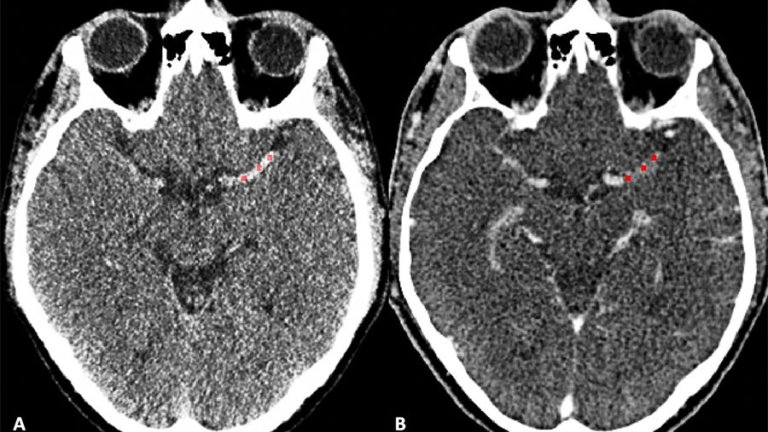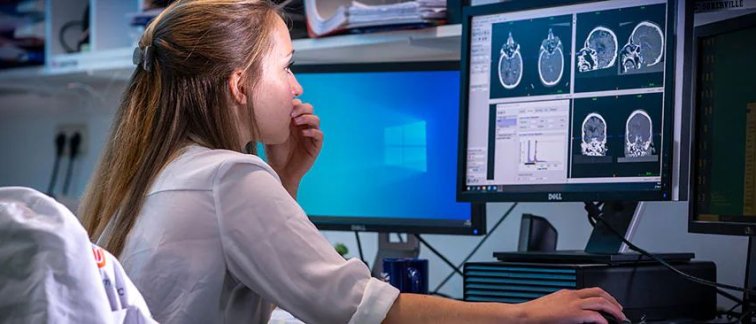According to Prof. dr. Mathias Prokop, chairman of the jury of the Frederik Philips Prize, her research particularly excelled in clinical relevance: “The MR CLEAN research group is like a moving train, in which various hospitals in the Netherlands and abroad collaborate. Manon’s research did not only help that train move forward, but also gave it new directions, including looking at the permeability of clots.”
Acute ischemic stroke and contemporary methods
There are two main treatment methods to remove the cause of an ischemic stroke: an occlusive blood clot in the intracranial arteries. The first proven effective treatment method was intravenous thrombolysis (administering a clot-dissolving medication like alteplase). In 2015, the value of endovascular treatment (removing the clot mechanically with a stent retriever or suction) for large strokes was proven. Intravenous treatment works less well for these large strokes, caused by larger clots in the proximal arteries – while these patients run the greatest risk of permanent damage, because there is still a large part of the brain behind that blocked artery.
Match between type of stroke and treatment method
Mainly due to faster treatment and better technical results, the outcomes of endovascular treatment in the Netherlands have continued to improve over the past years. Yet, still 30 percent of patients die or become dependent on daily care after a major stroke, even if treatment is successful. During her PhD research from 2017 to 2021, Manon researched the best match between stroke patient and treatment method. “When is it best to treat intravenously and when is it best to treat endovascularly, both, or neither? And in the latter case; when with a stent retriever, and when with suction?” Manon elaborates.
Radiological imaging as a supporting source of information
“I looked at the value of radiological imaging in selection for endovascular treatment; how can the information from a CT scan support treatment decisions? For example, I studied specific properties of clots, building on the work of Dr. Emilie Santos. What is the influence of properties such as length, location, and permeability of a blood clot on treatment results? You can demonstrate thrombus permeability by comparing a non-contrast CT scan with a CT-angiography. Among other things, it appears that clots with a higher permeability responded better to alteplase.” Manon explains.

New ways of thinking
When Manon started her thesis, endovascular treatment had only been studied in addition to standard treatment. For many patients, this meant that they were first given alteplase. However, it was also known that alteplase doesn't work well with those larger clots; and may increase the risk of brain hemmorrhage.
“Together with dr. Treurniet, drs. LeCouffe, drs. Rinkel, and drs. Bruggeman, we therefore investigated whether you could omit alteplase prior to endovascular treatment. The results show that there is little difference, but the confidence intervals are too large to draw sufficiently reliable conclusions. It is likely that alteplase prior to endovascular treatment is useful for some patients, but not for others. Clot permeability could play a role, for example, or time: the longer you wait after a stroke, the smaller the effect of treatment with alteplase. We are now working with research groups from all over the world to combine data and explore this further.”
Frederik Philips Prize 2022
“I am extremely honored and grateful to have won the Frederik Philips prize,” Manon says. “It is especially great that attention is being paid to this area of research. Within radiology, a lot of thought is given to how we can improve; how we can look at the bigger picture. That is one of the reasons why I chose and enjoy working in the field so much; radiologists generally love new technologies and innovations. It is a dynamic field, in which there are always new possibilities that allow you to do just a bit more every time. It is broad, innovative, and challenging.”
Big dream
Her biggest dream? “That an acute ischemic stroke is no longer something that turns your life upside down, but that you can go home independently. Without anyone having to help you to go to the bathroom. What can help is to streamline stroke treatment in such a way that we can offer each patient the treatment that will benefit them the most, as fast as possible. We are certainly not there yet, but I have high hopes to experience and contribute to that within my professional life.”

